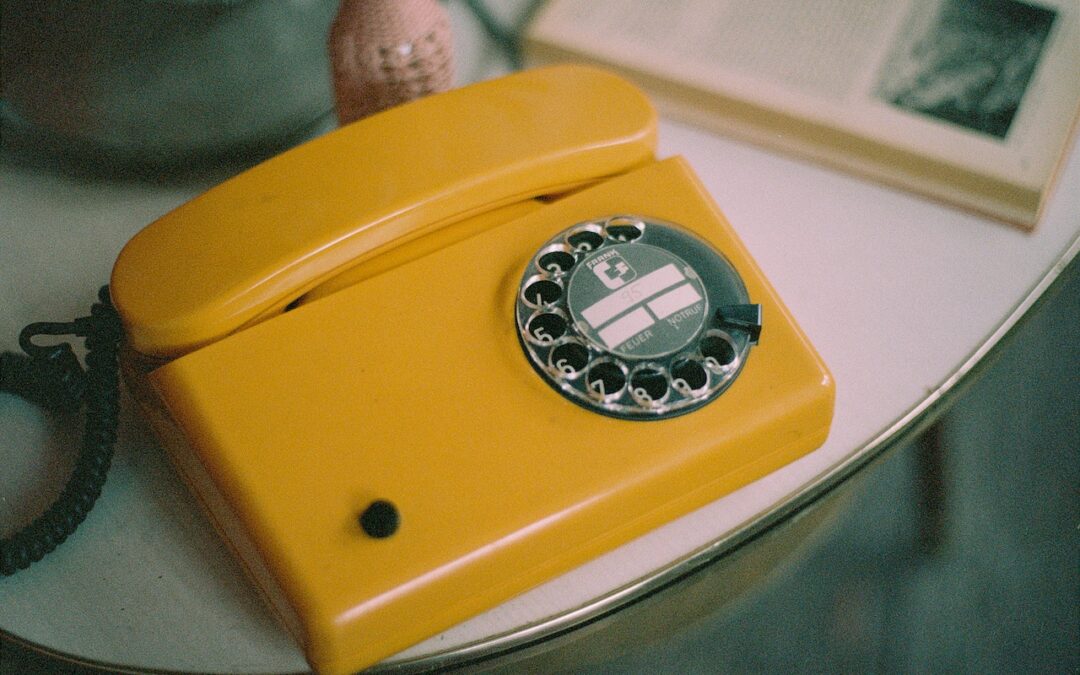Today’s smartphones are capable of so much more than just phone calls—with your phone in hand, you can take beautiful photographs, film a movie, record a song, play games, use any number of software programs, track your vital signs, and so much more. Phones have evolved almost beyond recognition in recent decades, so much so that it’s easy to forget their humble beginning as a way for two people to communicate across distance. We share a timeline of key events in the evolution of the telephone, from the liquid transmitter to modern smartphones.
1. 1876: Alexander Graham Bell patents the world’s first telephone.
Two inventors, Alexander Graham Bell and Elisha Gray, came up with the concept of the liquid transmitter independently of each other, both designing devices capable of transmitting speech electronically.
Arriving at the patent office just hours before Elisha Gray on March 7, 1876, Alexander Graham Bell won the race. According to accounts from the time, Bell’s first telephone call was to his assistant, Thomas A. Watson, telling him: “Come here, I want to see you.”
By early 1877, the Bell Telephone Company had established the first telephone lines between Boston and Somerville, Massachusetts. By 1881, there were more than 49,000 telephones across the United States. That year, a telephone service was established between Boston and Providence, Rhode Island. Service between Chicago and New York started in 1892, and between New York and Boston in 1894.
2. 1891: Almon Brown Strowger patents an automatic telephone exchange.
In the early decades of the telephone, an operator was needed to manually connect calls via a switchboard. Almon Brown Strowger, an undertaker by trade, was motivated to invent the automatic telephone exchange following difficulties with local telephone operators. One of the operators was the wife of Strowger’s main business rival, and he became convinced that she was redirecting calls intended for Strowger to her husband’s business, effectively stealing his trade.
Strowger created his invention in 1888 and was awarded the patent a few years later. The original model was constructed from a round collar box and straight pins. Collaborating with his nephew, brother, and others with specialist knowledge of financing and electricity, Strowger founded the Strowger Automatic Telephone Exchange in 1891. The first installation of a 99-line automatic telephone exchange was completed in La Porte, Indiana, the following year, following Strowger’s design.
3. 1892: Almon Brown Strowger receives a patent for a rotary dial.
Building on his successes with the automatic telephone exchange, Strowger subsequently invented the rotary dial, which allows callers to select a number by spinning a dial on the telephone a specific distance. Each number pulsed a certain number of times, effectively telling the stepping exchange mechanism which contact to connect the call to.
4. 1915: The world marks the first transcontinental telephone call.
Though the first transcontinental telephone line in the U.S. was finished and tested in July 1914, the event wasn’t widely publicized until January 25, 1915, during the Panama-Pacific International Exposition. Making what was then celebrated as “the world’s first transcontinental telephone call,” Alexander Graham Bell dialed from New York City, repeating his now-famous phrase from decades past: “Mr. Watson, come here. I want you.” The call was received by Thomas A. Watson in San Francisco, some 3,400 miles away. According to reports, Mr. Watson replied, “It will take five days to get there now!”
5. 1960: Mobile phones are introduced to cars.
Most people think that the mobile phone was invented in the 1980s, when executives lugged handsets the size of a brick around in giant briefcases. However, in reality, the origins of the mobile phone predate that, going all the way back to 1946, when mobile phones first started being used in cars. By the 1960s, they had evolved to shockproof, ultradurable, vacuum-tubed contraptions mounted on car dashboards. By 1964, there were around 1.5 million mobile phone users in America.
6. 1964: AT&T demonstrates the Picturephone at the World Fair in New York.
Again, we tend to think of video telephony as a relatively new invention, but its origins actually lie all the way back to the 1960s. Long believing that adding video to sound would revolutionize the communications industry, AT&T launched the Picturephone commercially in Chicago and Pittsburgh in 1970. Unfortunately, video calling failed to gain traction, leading AT&T to withdraw the Picturephone as a commercial failure a few years later.
7. 1978: America’s first cellular phone system is launched in Chicago.
The Advanced Mobile Phone Service, the world’s first cellular phone system, covered just 10 cell phones in the Chicago area. While a small number of professionals like lawyers and salespeople had been using car phones for years, they were prohibitively expensive. The first easily transportable mobile cell phone was the Motorola DynaTAC 8000X, retailing for an astronomical $3,995 when they went on sale in March 1984.
8. 1994: IBM debuts the world’s first touch screen mobile, Simon.
Packed with revolutionary features for its time, Simon not only incorporated a touchscreen, but email capability and more, creating a huge furor as the wondergadget of its day. Simon was large and expensive, though not so outrageously priced, retailing at $1,100. Weighing just over a pound, Simon was hefty by today’s standards. However, by incorporating a touchscreen and apps, it revolutionized the mobile phone market, proving to be an early forerunner of the smartphones we rely on so heavily in our professional and personal lives today.

